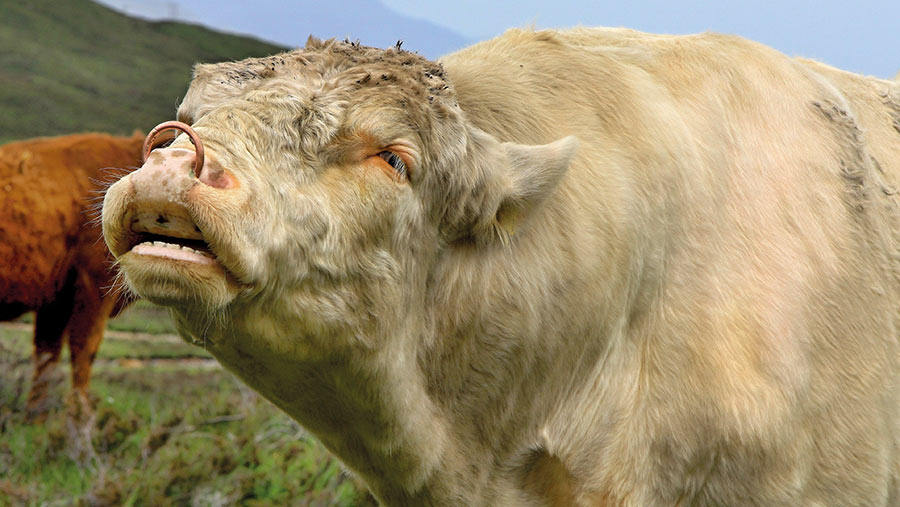Native and rare breeds offer healthy margins, survey shows
 © Adobe Stock/Jana
© Adobe Stock/Jana Rare breeds of livestock have the potential to deliver healthy margins but are still being held back by the lack of suitable abattoirs, a new survey by the Rare Breeds Survival Trust has revealed.
The survey was conducted in July 2021 to ascertain the commercial trends within the sector, and received more than 250 responses – both smallholders and larger-scale operators.
See also: How to succeed commercially with rare and native sheep breeds
Among the headline findings, almost half (49%) said they sold their rare or native breed products for a higher price than continental alternatives, while 64% thought input costs with native breeds were lower than with continental breeds.
These cost differences mainly related to feed and supplements, the type of land required, housing, and veterinary costs.
According to Huw Rowlands, who keeps native Red Poll cattle in a single suckler herd at Mickle Trafford in Cheshire, his native herd is less labour-intensive and has had few calving problems in the past 20 years.
“They are very good at converting grass into beef, making an income from marginal land,” he said. “Also, interest keeps growing in the provenance of beef, which is a good selling point for native breeds.”
John Atkinson also keeps native livestock in the south of Cumbria, run over 18ha of his own land and 165ha of rented ground. Breeds include Luing and Whitebred Shorthorn cattle, and Cheviot, Teeswater and Hebridean sheep.
“I don’t use any fertiliser, there is no bought in feed, few meds and the animals practically look after themselves, with the cattle wintering out in woodland,” he said. “When it comes to selling, we get a better price by cutting out the middleman, and can also make more use of the skins and wool.”
Carbon impact
But while costs may be lower and premiums attainable, that does not necessarily mean greater profits if there is a significant yield penalty.
Longer production cycles may also have a higher carbon impact, says Ben Harman, who keeps pedigree Charolais cattle on 274ha in Buckinghamshire.
“I have a great deal of respect for the work the RBST has done in preserving the gene pool,” he said.
“I do feel, however, it is important to understand that these breeds are rare for a reason – and that would be the extremely low productivity.”
He points to figures that show it takes on average 90kg of feed to achieve 30kg of growth at six months old, but 280kg of feed for 30kg of growth at 17 months old.
“Keeping animals longer to achieve a lower yield of meat is not going to help us as British beef producers do our part in lowering the impact of our produce,” he said.
Barriers
RBST chief executive Christopher Price said the opportunity to sell meat for a premium, coupled with lower input costs and more value from the “fifth quarter”, created an attractive opportunity for commercial success.
“But the results also show very clearly the need for urgent action on the other key barrier for rare breed businesses looking to grow – access to suitable abattoirs,” he said.
This was seen as one of the biggest barriers to growth for the rare breeds sector, cited by 42% of respondents, although 48% also pointed to consumer resistance to higher prices for quality produce.
Industry figures show that about a third of small abattoirs have closed in the past 10 years, under pressure from burdensome regulation, recruitment issues and a lack of vets.
Mr Price recently wrote to Defra secretary George Eustice, pointing to the problems that limited access to abattoirs cause for many farmers and calling for government investment to help the sector.
RBST survey results
- 59% have seen turnover from rare breeds increase in the past five years
- 86% have invested in their rare breeds enterprises (especially housing and digital marketing)
- 66% see consumer concern for the environment and animal welfare as “business drivers”
- 64% said rare breeds entailed lower costs
- 49% achieve a price premium with rare breeds
- 23% keep both rare breeds and continental breeds
